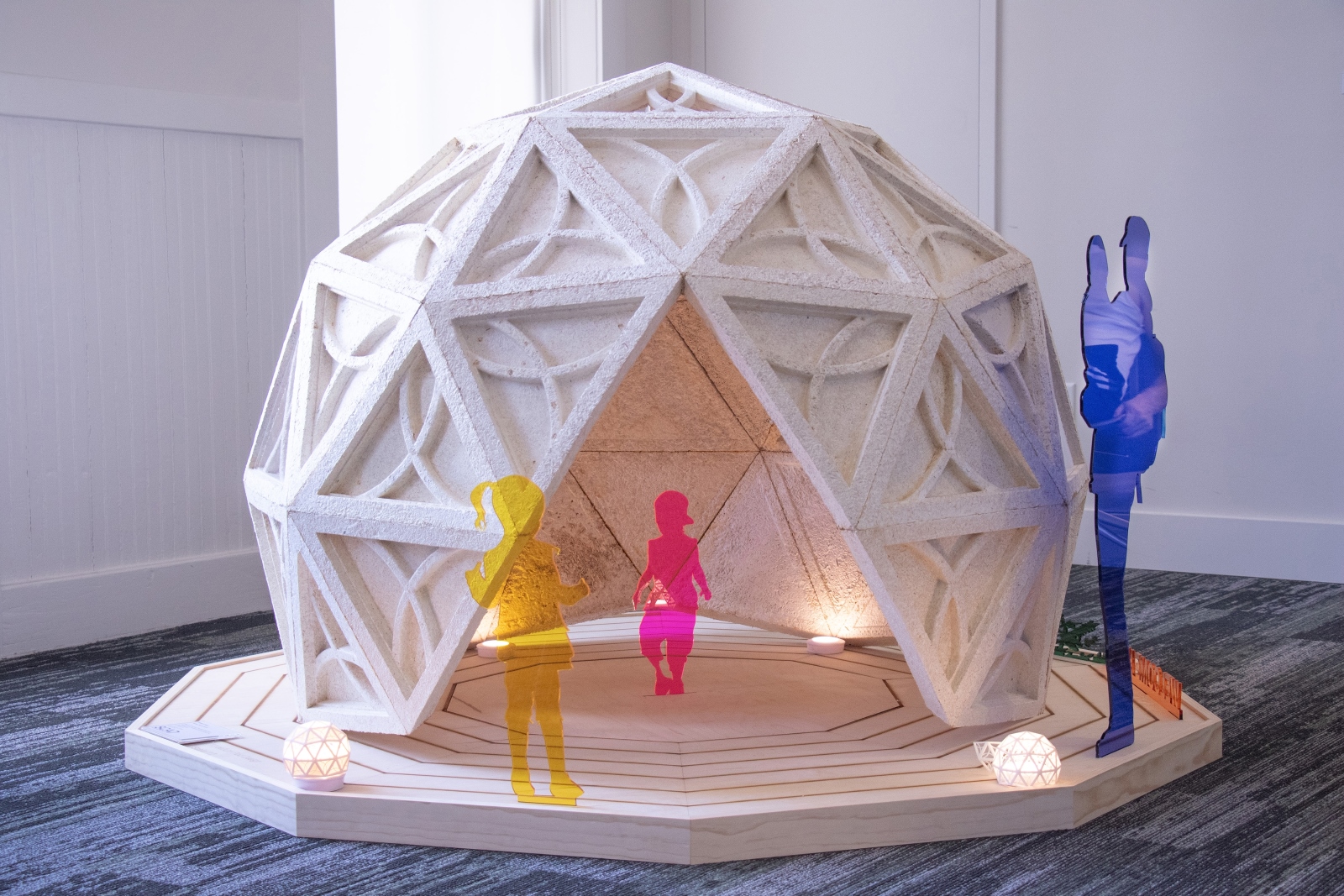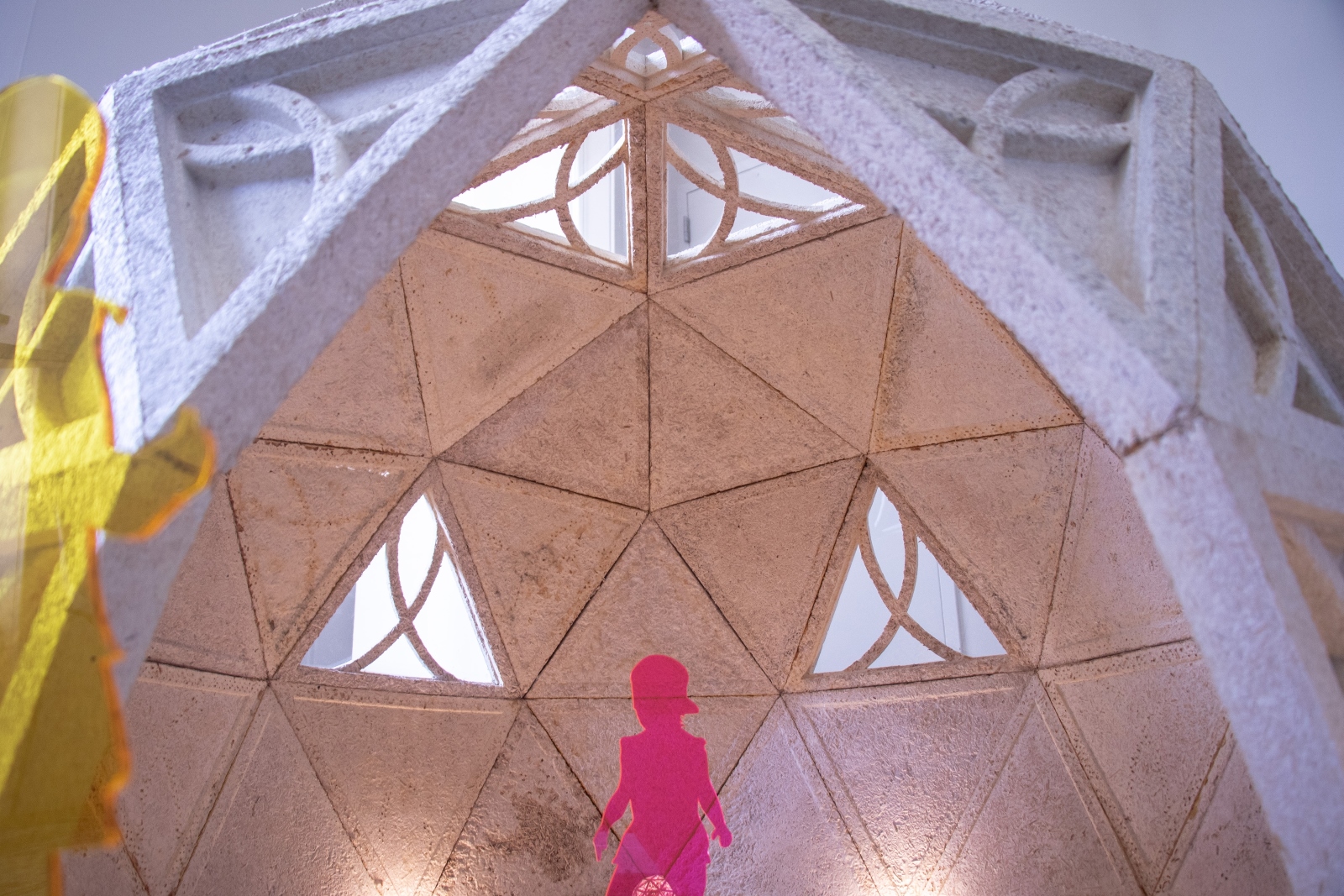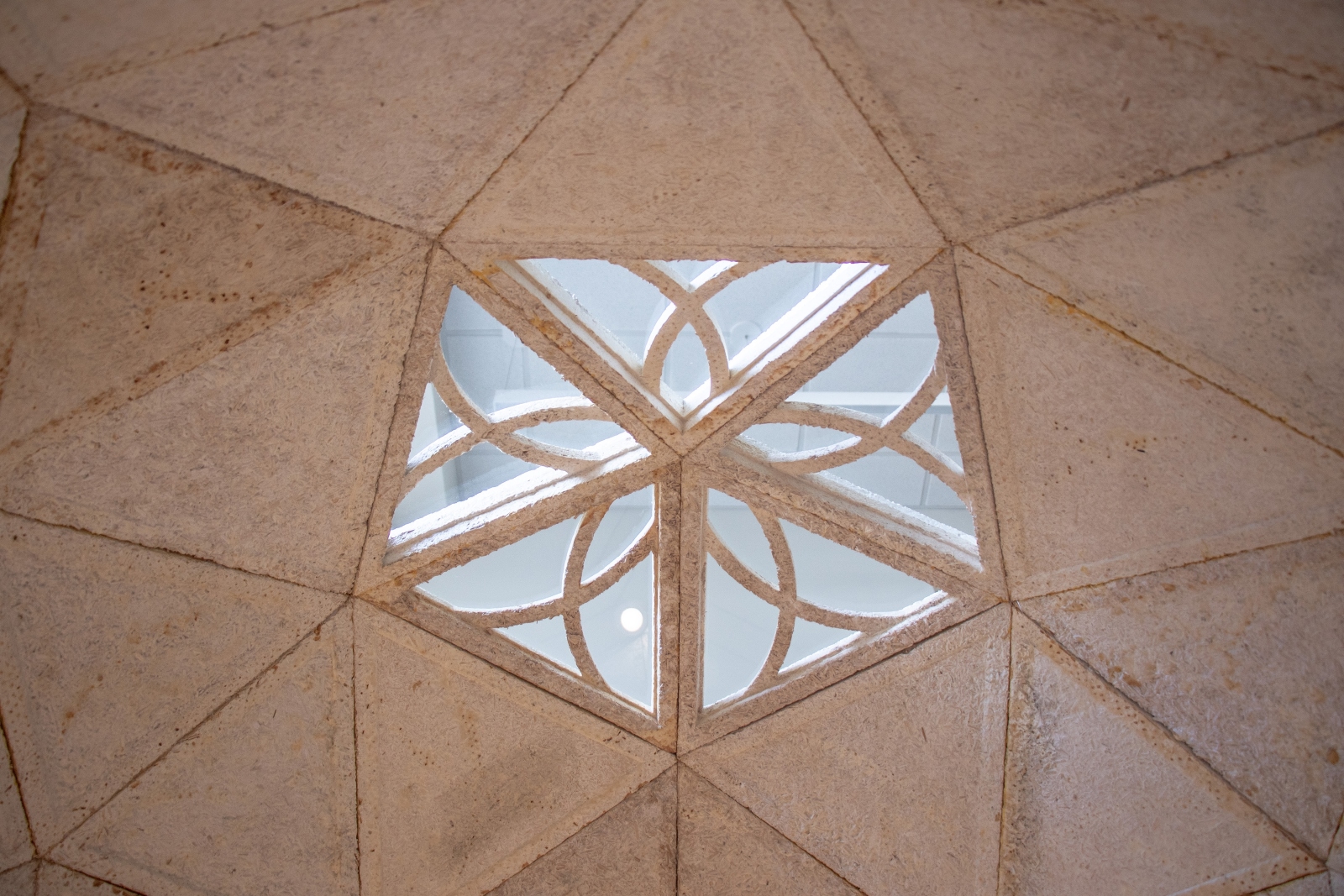Many homeless people remain on the street until the weather, violence, and illness eventually take their toll on them. It is difficult to break the circle, find a home, and reintegrate into society. Alistar Chang + Associates is on a mission to destigmatise homelessness by employing design and human empathy to nurture relationships between socioeconomic groups. By blending architecture with the power of nature, the company creates a participatory environment that can bridge the gaps between community residents and those experiencing homelessness. It all starts with a pod.

Episodic Homeless Housing
To mitigate homelessness, the designers created mycelium sphere pods. The biodegradable root-like structure of fungi is selected for its properties, such as renewability, insulation, sound absorption, and fire resistance. For the prototype, the design company used hemp as a substrate, and the mixture was placed in a mould. After 5 days of growth in a 5-part mould, the pod parts were baked at 200 degrees Fahrenheit to achieve their final form. The modular pods can be connected to create homes for the homeless, hygienic facilities, classrooms, or medical services. The pods can be connected in two ways: as clusters or circles that encourage interaction, or fractal structures for those who want more independence. The area will be filled with dining and picnic areas as well as necessary hygiene, laundry, and storage facilities. Parking and walkways will facilitate transportation and movement.

Transitional Homelessness
Special attention is given to single mothers and children to help them become self-sustaining and pull themselves out of poverty. The design includes 15 townhome-style housing units, three stories each with studio, one-bedroom, and two-bedroom units, enough to house up to six families per level and between 50 and 75 families in total. The community aimed at tackling transitional homelessness will feature a ground-floor garage and a gate, as well as a security office for added safety. Offices and a mini clinic will complement an outdoor playground and picnic area for kids.

Community Empowerment and Art Centre
Providing shelter alone is not enough to help the homeless integrate into society. That’s why homeless pods are also meant to provide non-profit or government services to the communities. These services range from cafes and restrooms to classroom spaces and the Hope Community Art Centre. A community art centre would include spaces for dance, Film, Art, and graphic design. Outdoor exercise and art classes would be held in Hope Community Park.

Apart from homeless people, the project aims to empower those who encounter risks and barriers to realise their potential fully. Spring Hope Community would offer medical and mental health services for poor working people at risk of homelessness. The multipurpose facility of classrooms, clinic offices, and meeting rooms, run by non-profit or the government, will help build new professional networks. Through life skill lessons, job training, and placement, people will learn how to acquire new skills and connect with others.

Photo credit: Alistair Chang








